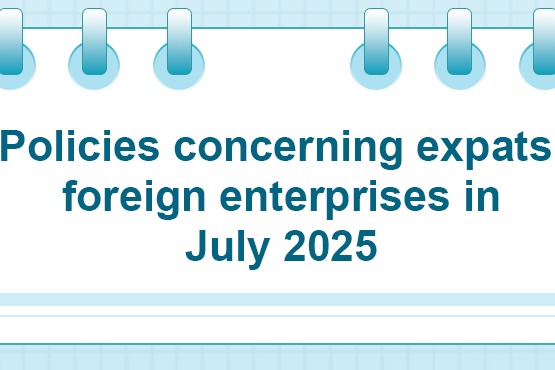Higher deficit to scale up fiscal firepower
Proactive policy toolkit to play bigger role in counter cyclical adjustments


A more proactive fiscal policy toolkit will play a bigger role in counter cyclical adjustments in 2025 amid sluggish domestic demand, a tepid property market and local government debt risks, as well as rising protectionism, to help the country tackle various challenges head-on and spur stable growth, analysts said.
A budget deficit up to 4 percent of gross domestic product, the highest on record, could be considered along with increased issuance of local government special-purpose bonds and ultra-long special treasury debt, to anchor market expectations, boost domestic demand and weather external shocks, they added.
The annual Central Economic Work Conference, where the nation's policymakers set the policy agenda for the world's second-largest economy in mid-December, charted a "more proactive" fiscal policy in 2025 for the first time, explicitly noting "an increase in its deficit ratio".
Details surrounding the annual fiscal deficit target are usually unveiled in March during the annual meeting of the National People's Congress — the country's top legislature, said Guan Tao, global chief economist at BOCI China.
However, the recent meeting's clear policy direction came as the authorities felt the need to act swiftly and communicate their fiscal plans more transparently to shore up market confidence as the economy is facing severe headwinds, Guan said.
Since the deficit ratio was set at 3 percent for 2024, analysts predict the figure could reach 3.5 to 4 percent in 2025, which will be officially announced at the NPC meeting in March.
"The fiscal deficit ratio holds a special significance compared to other fiscal policy tools, as people often gauge the government's policy stance based on this specific indicator," said Luo Zhiheng, chief economist at Yuekai Securities.
China has the policy room to raise the deficit ratio to 3.5 percent or even up to 4 percent, so as to scale up its fiscal firepower available to drive domestic demand and economic stability, and provide much-needed relief to local governments, Luo said.
Funding the deficit expansion through government bond issuances can translate into faster spending and more direct support for local economies, as they face fewer constraints in terms of their usage compared with special treasury bonds and local government special-purpose bonds, Luo added.
But the deficit ratio alone does not adequately capture the true extent of the government's policy actions.
The deficit number in China's general public budget account is just one piece of the puzzle. Special treasury bonds and local government special-purpose bonds, which are classified under government-managed funds, are not included in this deficit calculation, said Zhang Jun, chief economist of China Galaxy Securities.
Over the past three years, the sluggish property and land markets have led to a significant drop in land sales revenue, which accounts for a large portion of government-managed fund revenue, Zhang said.
The drop in land-based revenue has put pressure on government-managed funds, prompting China to turn to alternative financing channels. To stabilize government-managed fund expenditures, China has increased the issuance of special treasury bonds and expanded the quota for local government special-purpose bonds, Zhang added.
In the first 10 months of 2024, China's government-managed fund budget expenditures declined by 2.6 percent year-on-year, reaching around 8.1 trillion yuan ($1.1 trillion). This came against the backdrop of a significant 22.4 percent plunge in land sales revenue during the same period, according to data from the Ministry of Finance.
The narrowing of expenditure decline can be attributed to the issuance of 1 trillion yuan in ultra-long-term special treasury bonds and nearly 4 trillion yuan in new special local government bonds last year, Zhang said.
The usage of local government special-purpose bonds, as outlined during the meeting of the Political Bureau of the Communist Party of China Central Committee in mid-December, will extend to purchasing idle land resources, increasing land reserves and acquiring existing commercial housing units for government-subsidized housing purposes.
This expansion of usage scope, combined with the previously announced 800 billion yuan quota specifically for debt reduction, has led experts to forecast that the new quota for local government special-purpose bonds in 2025 will exceed 4 trillion yuan.
Wang Qing, chief macroeconomic analyst at Golden Credit Rating International, said that local government land sales revenue is likely to see negative growth again this year, which will weigh on government-managed fund expenditures.
However, the new issuance of special-purpose bonds, in addition to the debt reduction quota, is expected to increase to between 4.5 and 5 trillion yuan this year, Wang said, stressing that this substantial increase, which sits outside the regular public budget, is set to play a crucial role in supporting government fund expenditures and offsetting the decline in land-based revenue.
Compared to special local government bonds, which are a more traditional policy instrument, special treasury bonds can enhance the effectiveness of fiscal policies and deliver precise, tailored solutions to the challenges facing the economy, analysts said.
The volume of ultra-long special treasury bonds — typically those with a tenor of more than 10 years — is expected to increase from the current 1 trillion yuan to between 1.5 and 2 trillion yuan in 2025, said Zhang of China Galaxy Securities.
The country is also expected to issue 1 trillion yuan of special treasury bonds to support State-owned large commercial banks in replenishing their Tier-1 core capital, enhancing their ability to withstand risks and increasing credit extension, thereby better serving the real economy, Zhang said.
Tier-1 core capital refers to the core capital held in a bank's reserves, including common stock and disclosed reserves.
When observing the strength of China's proactive fiscal policy, the adjustment of expenditure structure is just as important as the expansion of spending volume, analysts said.
To optimize the fiscal spending structure, policy focus is transitioning from being primarily investment-driven to now placing equal importance on both investment and consumption, said Luo of Yuekai Securities.
Investment and consumption are the yin and yang of domestic demand — it's not an either-or situation, the goal is to find the optimal mix of the two complementary forces to ensure well-rounded growth, Luo said.
Infrastructure investment must be coupled with considerations around population mobility, structural changes and boosting the economy's potential growth rate, Luo said, adding that fiscal spending needs to be increased in areas such as healthcare, education and elderly care.
This increased focus on social welfare expenditures is closely linked to China's ongoing urbanization efforts and the integration of migrant workers into the urban economy, to boost their willingness to spend, Luo said.
Meanwhile, the trade-in policy for consumer goods, which provides incentives from fiscal spending for consumers to replace older products, has already showed clear signs of positive outcomes, Luo said.
The trade-in policy had driven over 1 trillion yuan in related product sales as of Dec 13, contributing to the sale of over 5.2 million passenger vehicles, as well as the purchase of more than 49 million units of household appliances, data from the Ministry of Commerce show.
In 2025, policymakers should encompass a wider range of consumer products under the trade-in programs, allowing more households to participate in and benefit from the initiative, Luo added.
Given the uncertainty surrounding fiscal revenue and the pace of special bond issuances, policymakers should be prepared to promptly augment budgets within the year to accelerate expenditure growth and better leverage the counter cyclical function of fiscal policy, Luo added.
wangkeju@chinadaily.com.cn




































